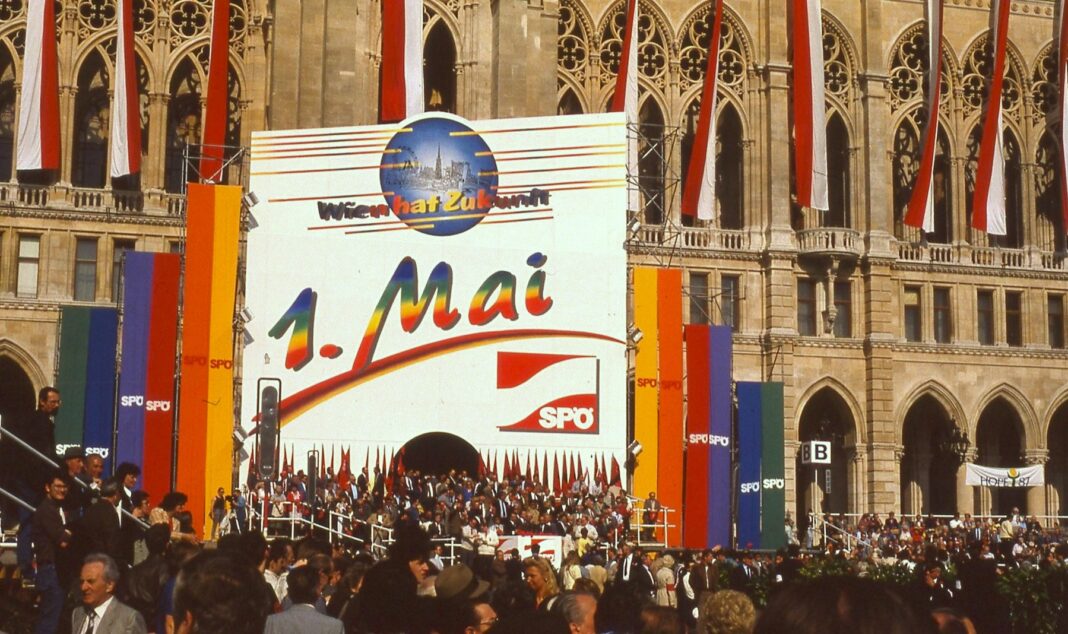
Today is May 1, or May Day. In Europe it’s a traditional festival marking the beginning of summer, in addition to being known in a great many locales worldwide as International Workers’ Day.
Saturday, May 4 marks the 150th running of the Kentucky Derby, which I need not explain, to be immediately followed by Cinco de Mayo (the 5th) on Sunday, and the opportunity to gingerly treat one’s Derby hangover with huevos rancheros and multiple micheladas (beer and tomato juice), all the regretting those bourbon stains and cigar burns from the day before, although not pretending to care a jot about the subtleties of Mexican history.
In short, give me a break. Indeed, these are hard times for a contrarian like me, or maybe these days a “beer-trarian.”
As a card-carrying, public transit-supportive pinko Europhile since the early 1980s, naturally I favor celebrating May Day and usually do, quietly at home, under the dictum that it’s best not to feed the (party) animals. They’ll become exhausted eventually, and then we can go back to accomplishing things.
I’ve viewed a race at “the track” exactly once my whole life, and we have so many excellent Mexican/Latin American restaurants nearby that merely one day a year is hardly enough to properly sample the sheer bounty. Too bad that Mexican corn lagers are so uniformly disappointing, but fortunately Israel Landin keeps the Sierra Nevada Pale Ale pouring down the street at his Delicias de Mexico.

Today’s digression is about May Day, and it has little direct connection to beer, even if more than a few were consumed at the time in Vienna, Austria, a place I’ve written about previously and will again today, oblivious to the remonstrance of those favoring an old Kentucky home or Cozumel — yet as always, to each their own.
Have a fine, varied holiday week. I’ll be here in my library dreaming about Fiakergulasch and Ottakringer — welcoming spring, honoring the workers, and cursing that drunken lost stork that dropped me onto the wrong continent back in 1960.
—

Friday, May 1, 1987 was the 16th day of my second European immersion tour. Prior to arriving in Vienna earlier in the week, it hadn’t occurred to me that I’d have an opportunity to witness the city’s annual May Day parade. For various reasons my proposed itinerary was in constant flux, and I might have been visiting any number of locales on May 1, not necessarily Vienna. Skill and planning always are paramount, and yet it’s also good to be lucky. Outside of the Soviet bloc, there couldn’t have been a finer place than the Austrian capital city to experience the international workers’ holiday.
By the summer of 1985, when I first visited the geopolitical conglomeration formerly known as the Soviet Union, the country’s annual May Day parade in Moscow had long since ceased to be a showcase of international socialism.
Rather, it had reverted to the numbingly overt, and was staged as an ideological pageant of nationalistic fervor — a genuine, old-fashioned, patriotic flag-waver for Mother Russia.
For the bedrock Soviet workers, who according to prevailing mythology were the chief beneficiary of international socialism, May Day’s single biggest selling point was being able to avoid the drudgery of the factory for a few precious hours. They’d have rather been on the beach at a posh Black Sea resort in Bulgaria, but what could be done?

At least for a while they could forget about the dystopian Five Year Plan by hopping the subway from their cookie-cutter, high-rise suburb to the historic center of the city, queuing with fellow samogon-bearers, plodding behind massive missiles through the cobblestones of Red Square, and then finally passing the reviewing stand arranged atop Lenin’s Mausoleum for a fleeting glimpse of the jowly old men in furry caps, grimacing arthritically while waving vacantly into space.
The parade was a choreographed set piece, of course, one fraught with symbolic properties, both for natives seeking clues to the direction of their country apart from the stultifying daily propaganda, and for observers elsewhere like those professional Kremlinologists in the employ of Western intelligence agencies.
These consulting spooks subsequently would examine film of the May Day parade, reshuffle their tea leaves, and strain them through a few hoary apocryphal algorithms. Passwords would be repeated, reports submitted, meetings held, and murmured decisions reached.
In appropriately clandestine fashion, money would be exchanged, and a hush briefly might descend, until suddenly, somewhere in the world, a legally elected government was overthrown — first one of the Capitalist paymasters’ choosing, then another selected by the Communists, each in its own turn, serving the dual purpose of preserving the status quo, and stimulating both full erections and full employment among participating secret agents.
Long before the decade of the 1980’s, the workers of the world — be they in Akron, Cape Town or Tashkent — already understood that they had become neither united, nor able to shed their chains in any fashion sufficient to exercise control over the means of production.
The stewards of the world’s two great economic “-isms” had divided the planet into manageable spheres of influence, with the non-aligned throngs always ripe for recruitment and exploitation. At the end of a day’s toil, the best way for just plain folks to endure the enforced pieties of a May Day parade (or for that matter, a 4th of July picnic) was to remain under the influence.
As Ernest Hemingway reminds us, the bottle is a blessed means of sovereign action. You first drink from it, and then throw it in the direction of the oppressor. In cases of rotgut, you can drink some of it, and then set the remainder aflame just prior to tossing it (see “cocktails, Molotov” for more).
During the Cold War, Russians and Poles chose vodka. Cubans opted for rum. I always imagined the Czechs and Hungarians to be more fortunate than most, seeing as they possessed beer (Pilsner Urquell) and wine (Egri Bikaver, or better yet Tokaji) of a higher uniform quality than produced by their Warsaw Pact neighbors.
For Americans, there’d be gallons of insipid ice cold light lager and a few pints of Jack Daniels. Choices from our NATO allies might have ranged from English cask bitter to ouzo in Greece, and from schnapps (Germany) to cider (Spain).

It goes to show that as opiates go, booze is vastly preferable to religion.
To recap, May Day takes place on May 1, and generally refers to springtime public holidays in the northern hemisphere, where the cultural tradition began long before Marx, Engels and Gus Hall.
For more than 125 years, May Day also has been considered International Workers’ Day, which we Americans predictably chucked to another time on the calendar (Labor Day, at summer’s end) so as to avoid confusion with the Commies.
Why? Labor and left-wing political movements first established May 1 as International Workers’ Day in memory of those who were killed and wounded during the Haymarket Massacre in 1886, which took place in Chicago.
During all my trips to Europe, only twice have I found myself in position to physically attend a May Day parade. The most recent time was in Helsinki in 2016, a relatively small celebration from our vantage point. The first was the aforementioned Friday in Vienna, and it remains clear in my memory.
I rose early and walked into the city center from my hostel near Westbahnhof, finding a comfortable place to stand along the Ringstrasse near City Hall.
The various unions, workplaces and numbered districts each were represented during the two-hour parade, and at the end, after the sanctioned elements had marched past, there were series of menacing, piggybacking trailers: Anarchists, Maoists, random radicals and even a mob of hooded Muslim extremists.
If allowed, I’d have likely been situated there, to the rear, carrying my banner of protest against Miller High Life.
Ah yes, I remember it well. Afterwards, I splurged on schnitzel and local draft beer, reflecting on the way that America’s customarily oblivious exceptionalism has detached its labor holiday from the rest of the world’s. It’s too bad.
For us.

—
Also about beer in Vienna:
 And from my web site, this: 40 Years in Beer, Part Thirty-Two: Vienna’s “Old Whisky Malt Waltz,” a precursor of beer revolutions to come.
And from my web site, this: 40 Years in Beer, Part Thirty-Two: Vienna’s “Old Whisky Malt Waltz,” a precursor of beer revolutions to come.
—
Previously at “Hip Hops”:
Hip Hops: With practice, beer knowledge is put into practice




















 Roger Baylor is an entrepreneur, educator, and innovator with 42 years of beer business experience in metropolitan Louisville as a bartender, package store clerk, brewery owner, restaurateur, writer, traveler, polemicist, homebrewing club founder, tour operator and all-purpose contrarian.
Roger Baylor is an entrepreneur, educator, and innovator with 42 years of beer business experience in metropolitan Louisville as a bartender, package store clerk, brewery owner, restaurateur, writer, traveler, polemicist, homebrewing club founder, tour operator and all-purpose contrarian.



